Last Updated:
July 26, 2025
Dog owners love their furry companions, but if you’ve noticed patches of dead grass popping up in the areas where your dog likes to relieve themselves, you’re not alone. While it might seem like your dog is just being a dog, the science behind why their urine harms your lawn is actually pretty straightforward. Thankfully, so are the solutions.
Keep reading to understand what’s actually happening at a chemical level, and what you can do to prevent or repair the damage caused by your dog!
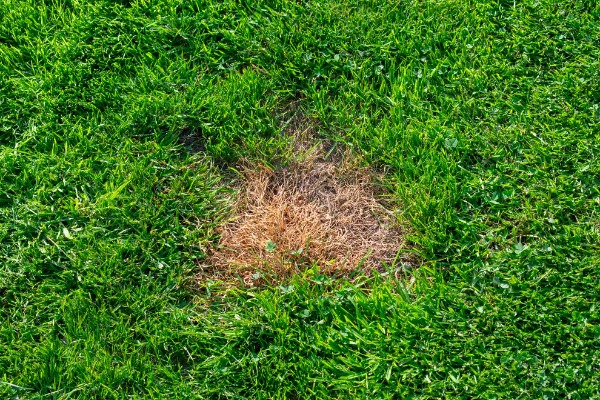
Let’s clear up a common myth first: dog urine isn’t toxic to grass. The problem isn’t the urine itself, but what’s in it. When dogs urinate, their bodies are eliminating excess nitrogen, a byproduct of protein metabolism. In small amounts, nitrogen is beneficial to lawns. It’s the same element found in fertilizers and helps promote green, lush growth. But too much of a good thing? That’s when problems start.
When your dog pees in the same spot over and over, a concentrated blast of nitrogen hits that area of grass. Rather than feeding it, it overwhelms the plant, causing chemical burns especially in dry conditions or on already stressed turf. That’s why the center of a urine spot often appears dead or brown, while the edges may actually look greener than the surrounding grass. The edge gets a diluted dose of nitrogen and thrives, while the middle withers from overload.
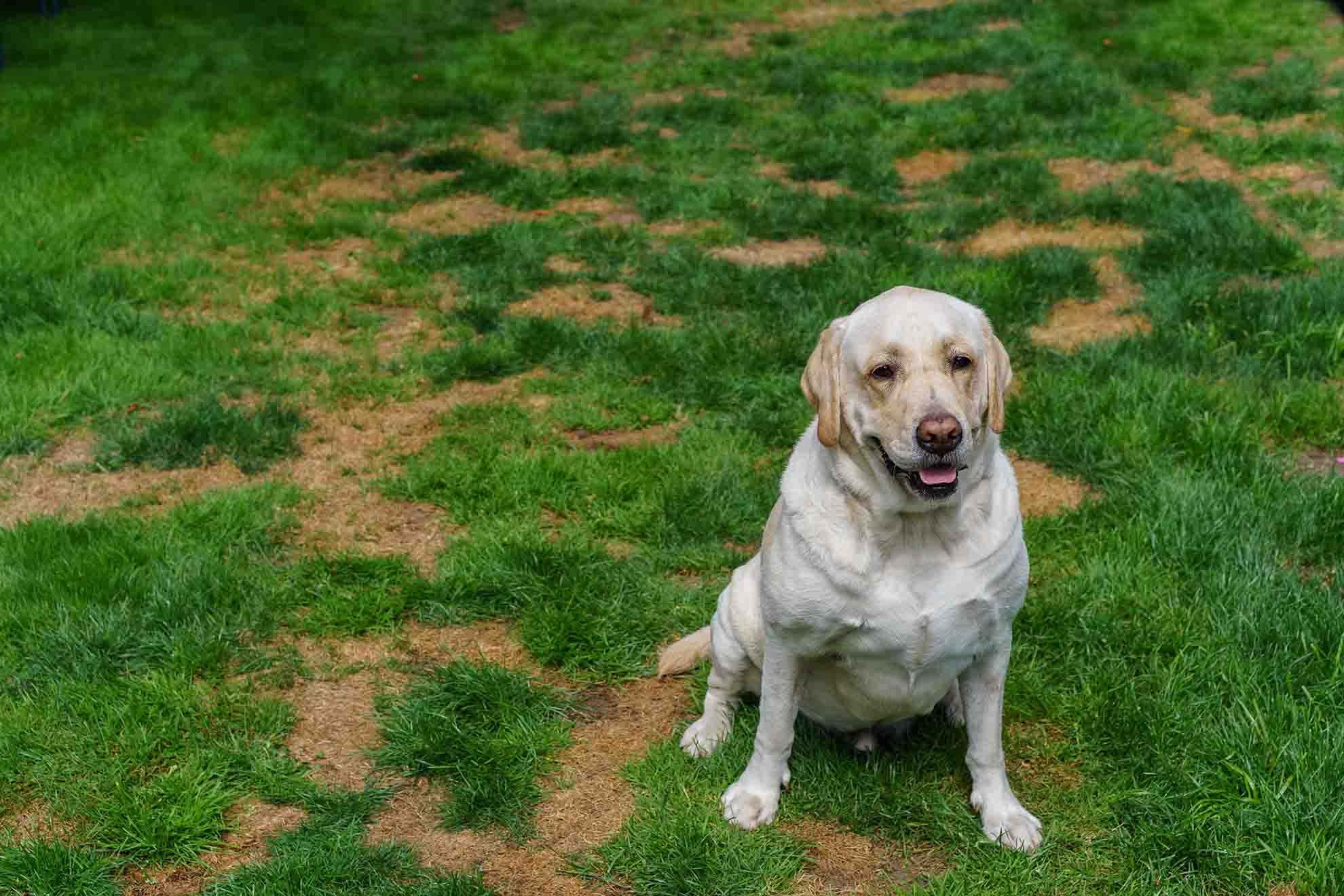
The color of the damaged grass can tell you a lot. Very dark green rings usually indicate a moderate nitrogen dose, while a straw-colored center points to overexposure. Unlike fungal diseases, which may spread irregularly or appear during specific seasons, dog spots are often isolated and consistently shaped.
It’s important to make sure you’re actually dealing with dog urine damage before you begin treatment. Pet spots have some unique characteristics:
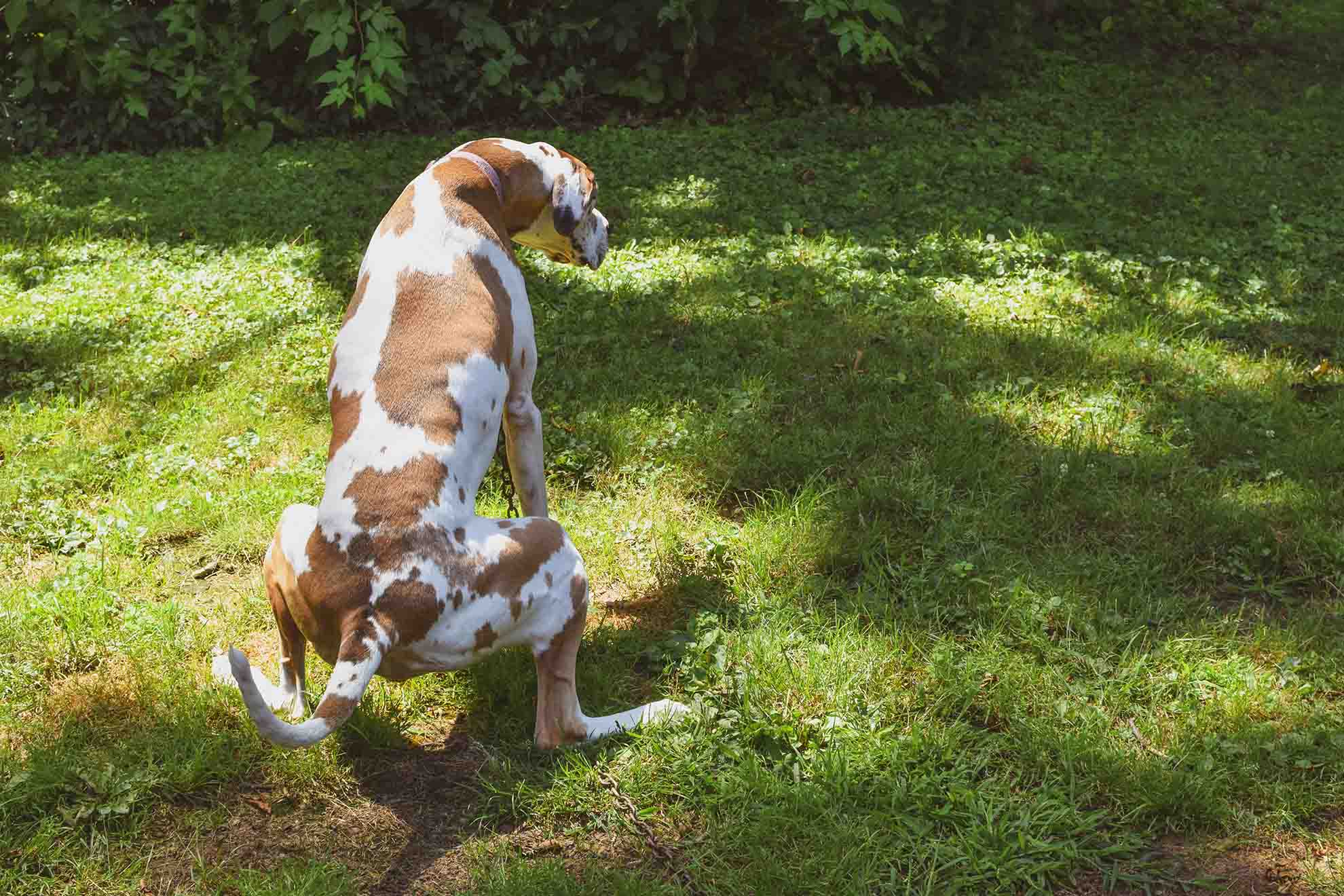
While all dogs have nitrogen in their urine, not every dog affects your lawn the same way. Even if your dog seems like the main culprit, their habits, diet, and even gender may be playing a role in how your lawn is affected. Some factors that influence the severity of lawn damage include:
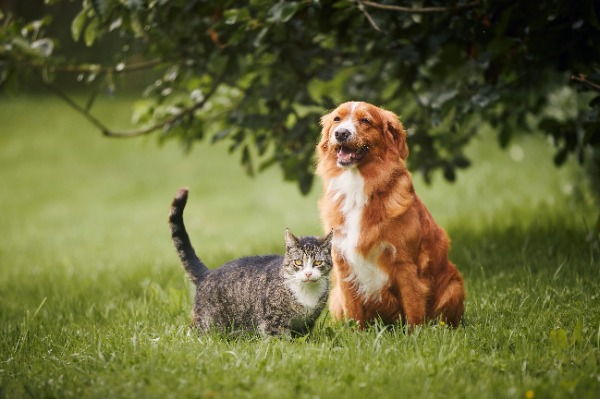
If you’re looking to stop those yellow spots before they start, you’ve got a few good options:
1. Water the Area Immediately After Your Dog Pees: The simplest and most effective tactic is flushing the spot with water right after your dog urinates. A quick rinse with the garden hose dilutes the nitrogen and helps prevent it from reaching toxic levels. This is especially important during hot or dry weather, when grass is more susceptible to stress.
2. Designate a Dog Potty Area: Creating a specific place in your yard where your dog is encouraged to go can limit the damage to a single, manageable zone. Consider using mulch, gravel, or artificial turf in this area. With consistent training, many dogs will adapt to a designated spot.
3. Encourage Better Hydration: Make sure your dog always has access to clean, fresh water. More water intake leads to more diluted urine, which is gentler on your grass. While you shouldn’t force your dog to drink more than they want, offering ice cubes, water-rich snacks (like watermelon), or an additional bowl outside can help encourage them to stay hydrated.
4. Rethink Your Dog’s Diet: Some pet owners consider switching to a lower-protein diet to reduce the nitrogen content in their dog’s urine. However, always consult your veterinarian before making any dietary changes. Your dog’s nutritional needs should come first, even if your lawn pays the price.
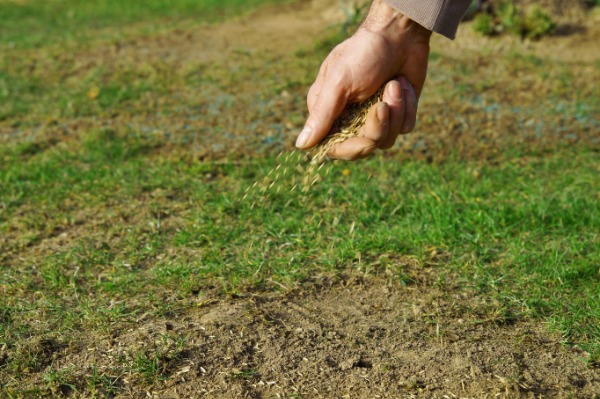
If your lawn already has patches of damaged grass, there’s still hope. Here’s how to bring those brown spots back to life:
Step 1: Remove the Dead Grass: Start by raking out any completely dead or burned areas. This makes space for new grass to grow.
Step 2: Flush the Soil: Even if the grass is gone, the nitrogen is probably still in the soil. Soak the area deeply with water to help flush out the remaining salts and excess nitrogen. This prepares the soil for healthy regrowth.
Step 3: Apply a Soil Conditioner (Optional): Some homeowners find success using soil neutralizers made for dog urine spots. These products can help balance the pH and make the area more hospitable for new seed.
Step 4: Reseed or Patch the Area: Spread grass seed over the spot or use a lawn patch mix. Be sure to choose a seed that matches your existing lawn. Water the area daily until new grass is established.
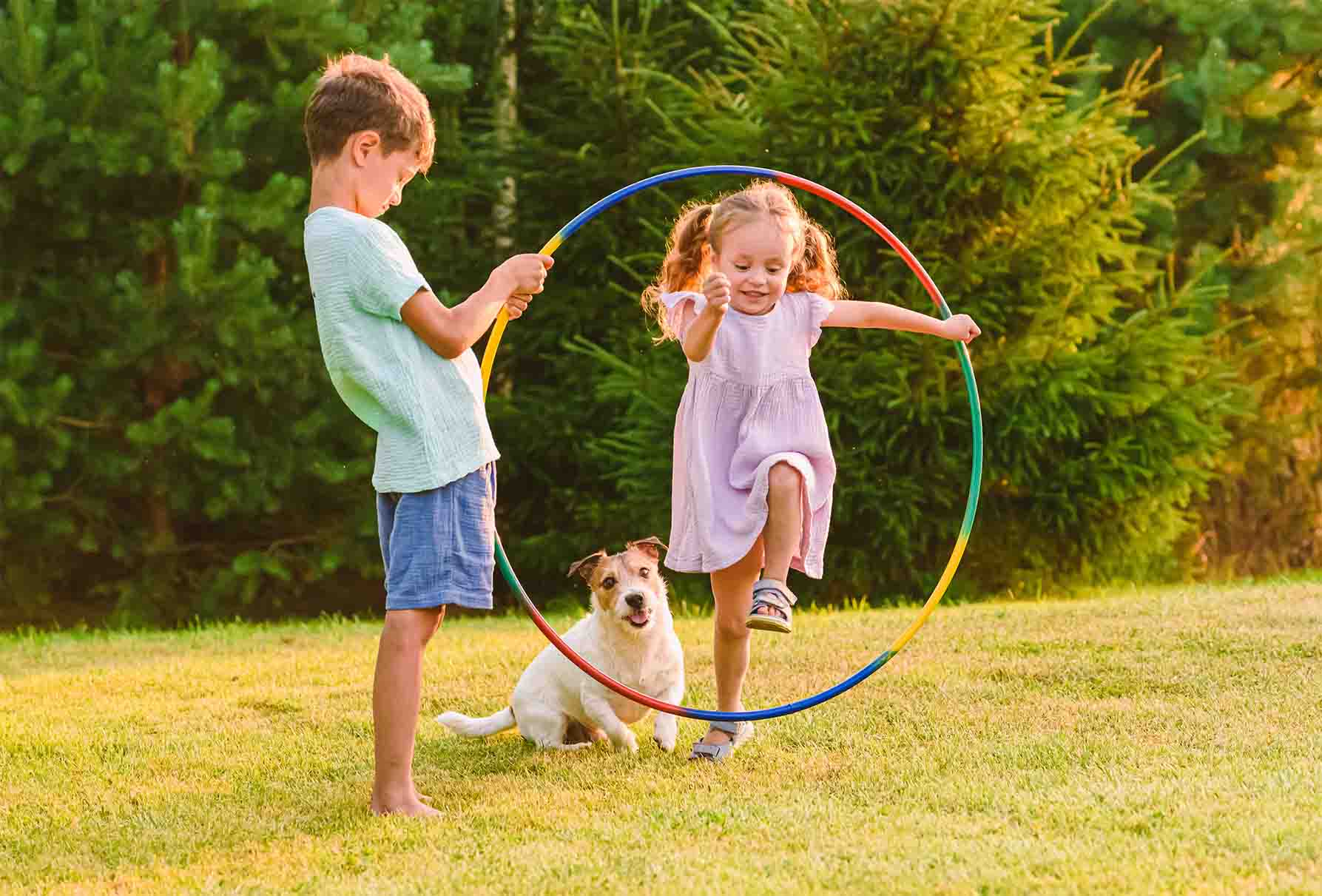
Dog urine spots are a common frustration, but they’re not impossible to manage. Whether you choose to designate a potty zone, improve hydration, or simply stay vigilant with a garden hose, small changes can make a big difference. And when damage does occur, you will know how to fix it.
For more tips on how to repair damage done to your grass, reach out to the lawn care experts at Holmes Lawn & Pest for the best lawns in the Salt Lake City area.
How To Care For Kentucky Bluegrass In Utah Lawns
Kentucky bluegrass is beloved as one of the most beautiful and comfortable turf types available. Come learn how to maintain this grass in your Utah lawn.
Learn MoreHow To Care For Perennial Ryegrass In Utah Lawns
This post explores why perennial ryegrass is perfect for Utah homeowners who want a resilient lawn that looks great!
Learn MoreHow To Care For Tall Fescue In Utah Lawns
This blog post explores what makes tall fescue one of the most popular grass types in Utah, and what steps you can take to maintain a tall fescue lawn.
Learn More